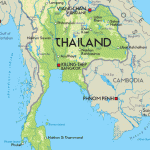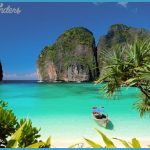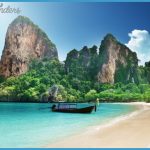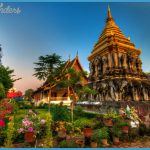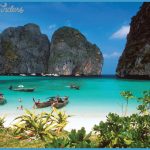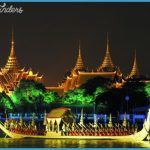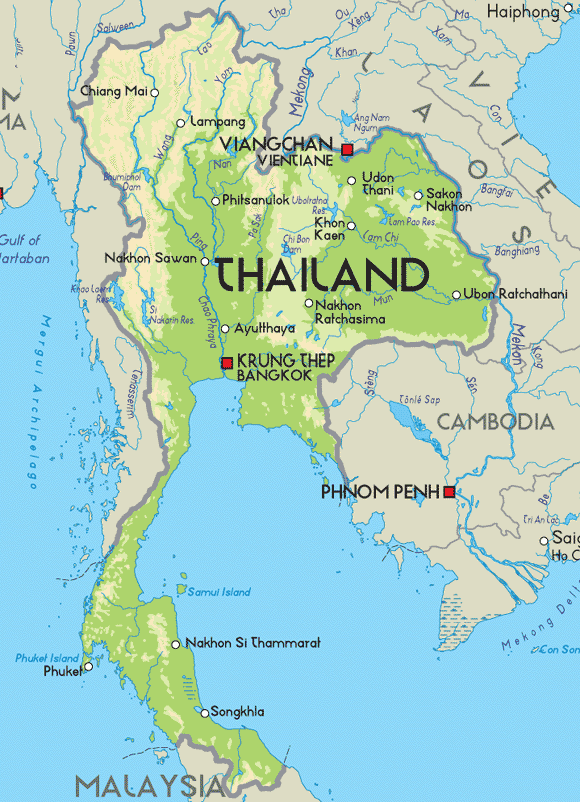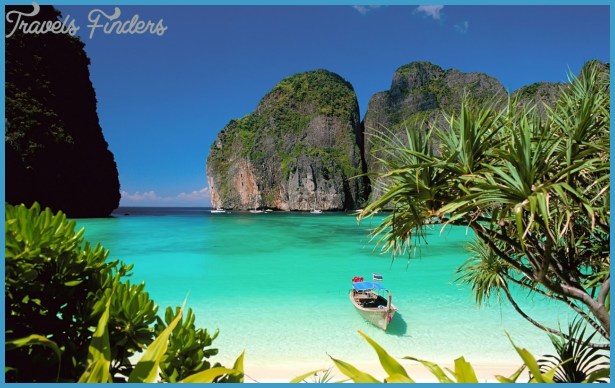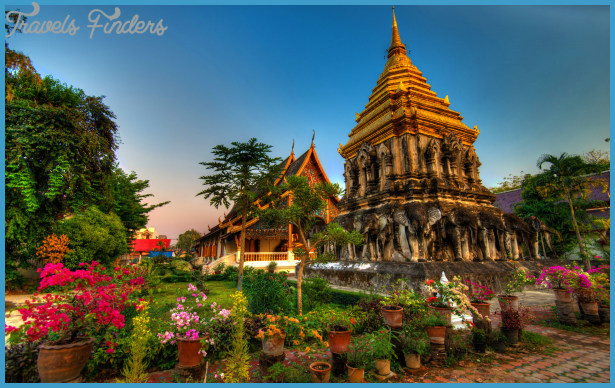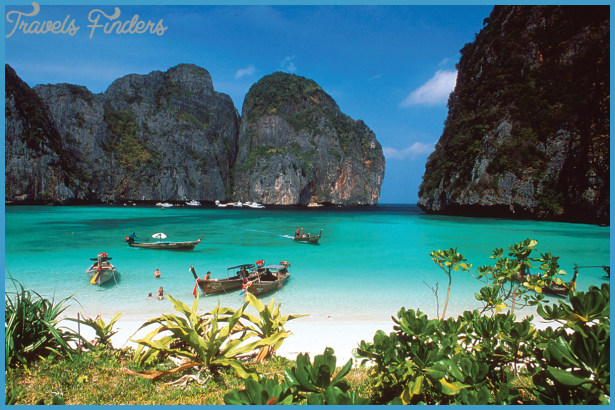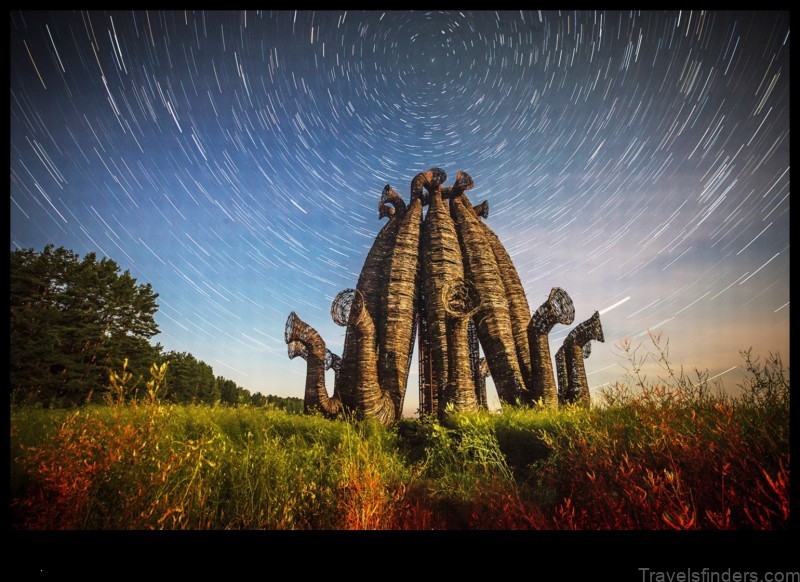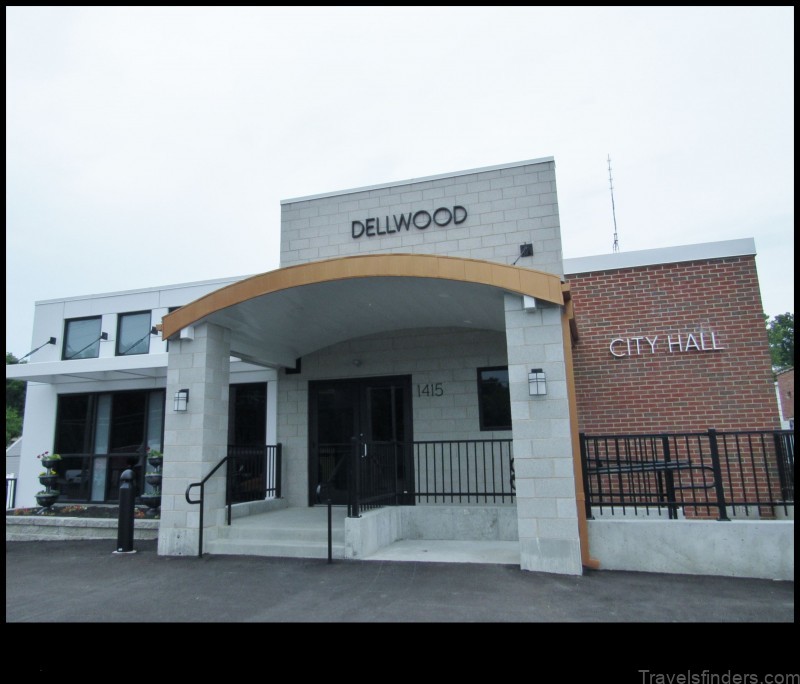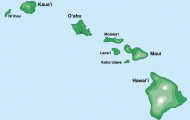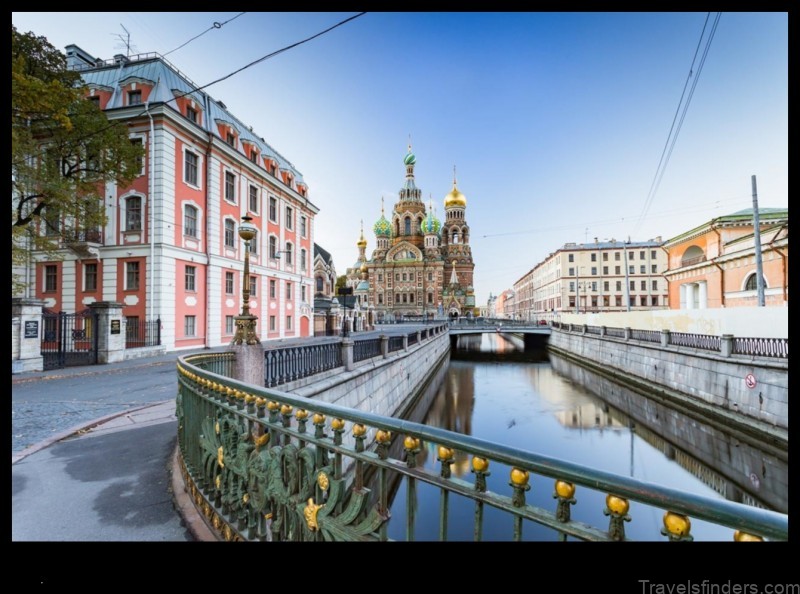Bangkok, like Tokyo, Hong Kong and Singapore, is a major transit point within the Far East. It is also a vacation destination for 2.25 million visitors, 150,000 of them from the United States. Americans visit Thailand as a stopover and Bangkok for its shopping and exotic culture. About thirty international airlines fly to Bangkok. Malaysians, Singaporeans, Japanese, and Germans come in the largest numbers. Americans choose to stay in the luxury hotels of Bangkok and remain about 5.5 days sightseeing and shopping for silks and gems and sex.
Little known to American visitors to Thailand is Khao Yai National Park (cow-ye), two hundred miles northeast of Bangkok. It is so big that it spreads over parts of four provinces. This jungle park has butterflies galore, at least two hundred species of them, and also about two hundred elephants, not to mention fifty to one hundred tigers. Travel with a guide unless you feel like becoming cat food. The State Railway of Thailand arranges special tours from Bangkok’s Hualampong Station.
Bangkok, with a population of five million, is hot, overcrowded, noisy, and polluted. Some of the hotels are outstanding for their luxury. The Oriental, about seventy-five years old, has an international reputation. The newest deluxe hotel, The Mandarin, is said to be even more luxurious. (At least the rates are higher.) It is owned by Cathay Pacific, the Hong Kong-based airline. Altogether Bangkok offers some fifteen thousand first-class hotel rooms.
Europeans tend also to visit Thailand’s number two city, Chiang Mai, about four hundred miles north of Bangkok. It is much cooler, especially during the winter months, because of the altitude. The ladies are said to be the most beautiful in the country. The city has a number of interesting wats (temples) and not far away elephants can be seen at work moving logs.
Pattaya is a sea resort town to the south of Bangkok.
Tropical fruits, many unknown to the American visitor, can be ordered via room service in the better hotels. Mangosteens are available, a fruit that connoisseurs choose above all others. Jackfruits, custard apples, rose apples, and rambutans are others that should be tried.
Thai cuisine seafood, rice, a variety of spices has its aficionados. One writer characterizes Thai food as coming in three varieties, hot, hotter, and hottest. Coriander, garlic, pepper and chili peppers are widely used. Lemon grass adds a distinctive flavor to seafood soups. Like the Chinese, the Thais spend considerable effort in presenting their foods.
The Thai Tourist Authority states that Thailand has five hundred tourist attractions, many of them Buddhist shrines and temples. The Thai people are notably friendly. One of a kind is the bridge over the River Kwai, where during the last week of November a Light and Sound Show is presented. World War II veterans and others come to remember how the bridge was built at the cost of hundreds of lives of Allied prisoners of the Japanese.
Boxing in Thailand is a paradox. Maythai (pronounced moo-eee-tie) boxing is vicious. The Thais, steeped in Buddhist gentleness, love their special kind of boxing, which combines kicking with traditional fisticuffs to inflict serious injury. Elbows, knees or any part of the body, except the head, are used to inflict serious damage. One person is killed in the ring about every three months. Many more are badly injured. Rabbit-punching and kicking the kidneys are an approved part of the contest. Kicking is so strenuous the fighter’s feet are anesthesized between rounds to block out the pain.

